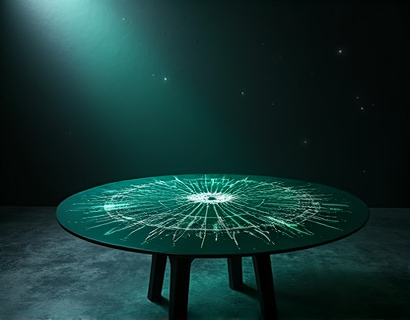Unveiling the Mysteries of the Indus Valley Civilization: A Journey Through Ancient Secrets and Heritage
The Indus Valley Civilization, one of the oldest and most enigmatic civilizations in human history, flourished around 2600 BCE to 1900 BCE in the regions now known as Pakistan and northwestern India. This ancient culture, known for its advanced urban planning, sophisticated water management systems, and mysterious script, continues to captivate historians, archaeologists, and enthusiasts alike. This article delves into the depths of this civilization, exploring its secrets and celebrating its heritage through art and exclusive merchandise, offering a comprehensive resource for history enthusiasts and cultural scholars.
The Indus Valley Civilization is often referred to as the Harappan Civilization, named after the city of Harappa, one of the first sites discovered and excavated in the 1920s. The civilization was spread over a vast area, encompassing the Indus River Valley, the Ganges-Yamuna Doab, and the regions extending to the Arabian Sea. The two major cities, Harappa and Mohenjo-Daro, serve as the primary windows into this ancient world, providing invaluable insights into the daily life, social structure, and technological advancements of its people.
Urban Planning and Architecture
One of the most striking aspects of the Indus Valley Civilization is its remarkable urban planning. The cities were built with a grid system, featuring straight streets and well-planned blocks. Mohenjo-Daro, in particular, showcases this sophisticated layout. The city was divided into two main parts: the Citadel and the Lower Town. The Citadel, elevated on a platform, likely served administrative and religious purposes, while the Lower Town housed residential and commercial areas.
The buildings in Mohenjo-Daro were constructed using standardized bricks, a testament to the civilization's engineering prowess. Houses had advanced features such as baked brick baths, drainage systems, and even what appears to be an early form of air conditioning. The use of standardized bricks ensured uniformity and durability, reflecting a high level of organizational skill. The streets were paved and had sophisticated drainage systems, with covered sewers running beneath the streets, a feature unmatched in many contemporary civilizations.
Water Management and Public Health
The Indus Valley Civilization's approach to water management was highly advanced for its time. Each house had access to a private well, and the cities had large public baths, indicating a strong emphasis on cleanliness and public health. The Great Bath in Mohenjo-Daro, a massive structure with a stepped approach and a central tank, is believed to have been used for ritual purification. The civilization also constructed reservoirs and tanks to store rainwater, ensuring a steady supply during dry periods.
Advanced irrigation systems supported agriculture, the backbone of the economy. The use of canals and dams allowed for the cultivation of crops such as wheat, barley, and cotton. The presence of weight standards and measures suggests a well-organized trade system, both within the civilization and with neighboring regions. This economic stability contributed to the prosperity and longevity of the Indus Valley Civilization.
Art and Craftsmanship
The people of the Indus Valley Civilization were skilled artisans, producing a wide range of artifacts that showcase their creativity and craftsmanship. Pottery, one of the most common materials, was used for both practical and decorative purposes. The pottery features intricate designs, including geometric patterns, animal motifs, and human figures. The quality and variety of the pottery indicate a high level of artistic skill and a rich cultural tradition.
Bronze and copper were widely used for tools, weapons, and decorative items. The famous "Dancing Girl" figurine, made of bronze, is a prime example of the civilization's artistic achievement. This small statue, with its detailed depiction of a dancer, showcases the artist's attention to detail and understanding of human anatomy. Other artifacts include seals, jewelry, and beads, often made from materials like steatite, lapis lazuli, and carnelian, indicating extensive trade networks.
Writing and Script
One of the most intriguing aspects of the Indus Valley Civilization is its writing system. The script, consisting of over 400 distinct signs, has not yet been fully deciphered. Despite extensive research, the language remains a mystery, adding to the allure and enigma of this ancient culture. The script appears on various artifacts, including seals, pottery, and tablets, suggesting its use in administrative, religious, and possibly commercial contexts.
Numerous theories have been proposed to decode the script, ranging from connections to Dravidian languages to influences from Mesopotamian writing systems. However, without a bilingual text or a key to translation, the script remains one of the greatest unsolved puzzles of ancient history. The persistence of scholars in deciphering this script continues to drive research and interest in the Indus Valley Civilization.
Religion and Beliefs
While specific religious practices and beliefs of the Indus Valley Civilization are not well-documented, archaeological findings provide clues about their spiritual life. The presence of numerous small figurines, often depicting female forms, suggests a possible mother goddess cult. These figurines, found in homes and public spaces, may have been used in domestic rituals or as talismans.
The Great Bath and other ritual structures indicate a strong emphasis on purification and possibly water-based rituals. The discovery of altars and fire pits in various sites suggests the practice of fire worship or other forms of ritual combustion. The lack of grand temples or monuments dedicated to specific deities, unlike in later Indian religions, points to a more decentralized and possibly household-centered religious practice.
Decline and Legacy
The decline of the Indus Valley Civilization is a subject of much debate among historians and archaeologists. Various factors have been proposed, including climate change, environmental degradation, and invasions by nomadic tribes. The shift in river courses, particularly the drying up of the Saraswati River, may have led to agricultural decline and population displacement. Additionally, internal social and economic changes could have contributed to the civilization's gradual collapse.
Despite its decline, the Indus Valley Civilization left a lasting legacy. Its advanced urban planning, water management systems, and craftsmanship influenced subsequent cultures in the region. The civilization's impact can be seen in the Vedic period and later Indian civilizations, which adopted and adapted many of its technological and cultural practices. Today, the Indus Valley Civilization remains a source of pride and inspiration, symbolizing the ingenuity and resilience of ancient human societies.
Celebrating the Heritage Through Art and Merchandise
For history enthusiasts and cultural scholars, exploring the Indus Valley Civilization goes beyond academic study. Art and exclusive merchandise offer a unique way to connect with this ancient culture, bringing its secrets and beauty into everyday life. From replicas of artifacts to contemporary designs inspired by Indus motifs, these items serve as tangible links to the past.
Replicas of pottery, jewelry, and seals allow enthusiasts to own a piece of history. These items are not only decorative but also educational, sparking curiosity and conversation. Art prints and posters featuring detailed illustrations of Indus sites, artifacts, and scenes from daily life provide a visual journey through this fascinating civilization. These artworks can adorn walls, creating a cultural ambiance in homes and offices.
Exclusive merchandise, such as clothing and accessories, incorporates Indus-inspired designs, blending ancient motifs with modern fashion. T-shirts, scarves, and bags featuring geometric patterns, animal motifs, and stylized human figures offer a stylish way to honor the Indus Valley Civilization. These items make thoughtful gifts for those interested in history, archaeology, and cultural heritage.
The creation and sale of these items also support the preservation and study of the Indus Valley Civilization. Proceeds from merchandise sales can fund archaeological research, conservation efforts, and educational programs, ensuring that the legacy of this ancient culture continues to be explored and appreciated.
In conclusion, the Indus Valley Civilization remains a captivating subject for those interested in ancient history and culture. Through detailed exploration and the celebration of its heritage through art and merchandise, we can deepen our understanding and honor the achievements of this remarkable civilization. Whether through academic research or personal appreciation, the Indus Valley Civilization continues to inspire and educate, bridging the gap between the past and the present.










































